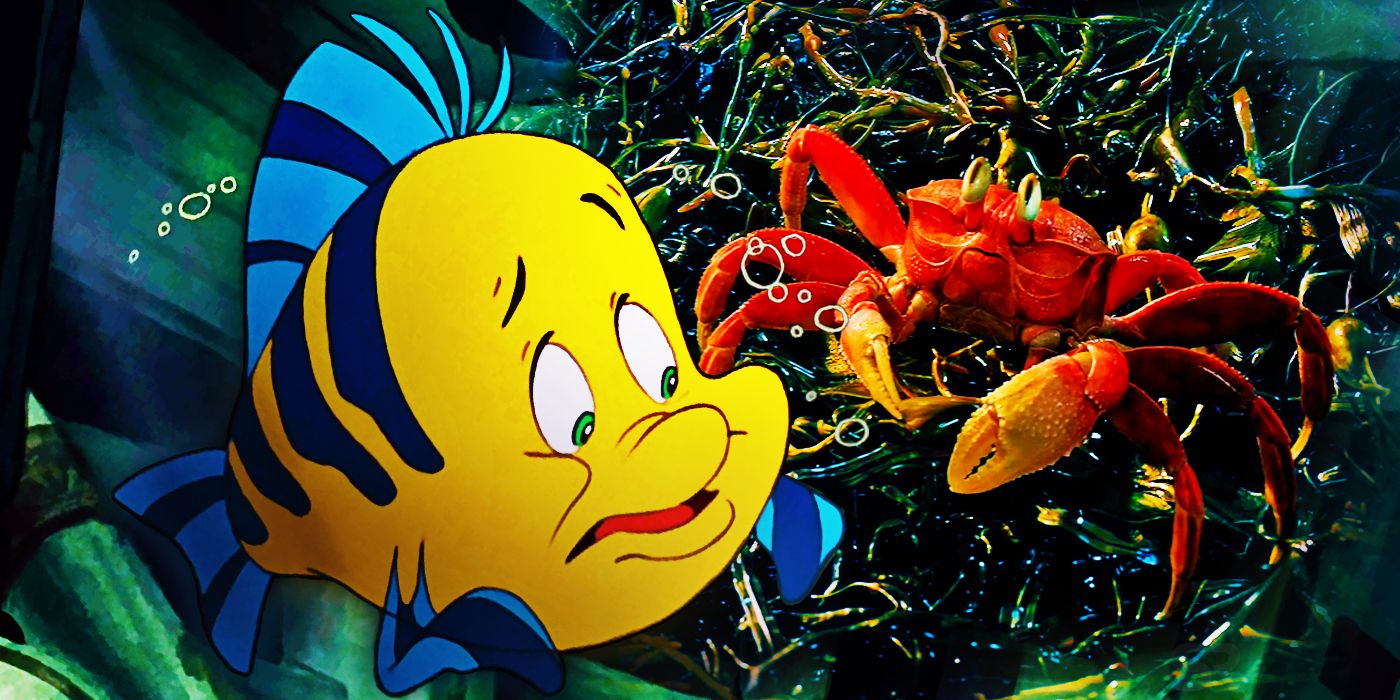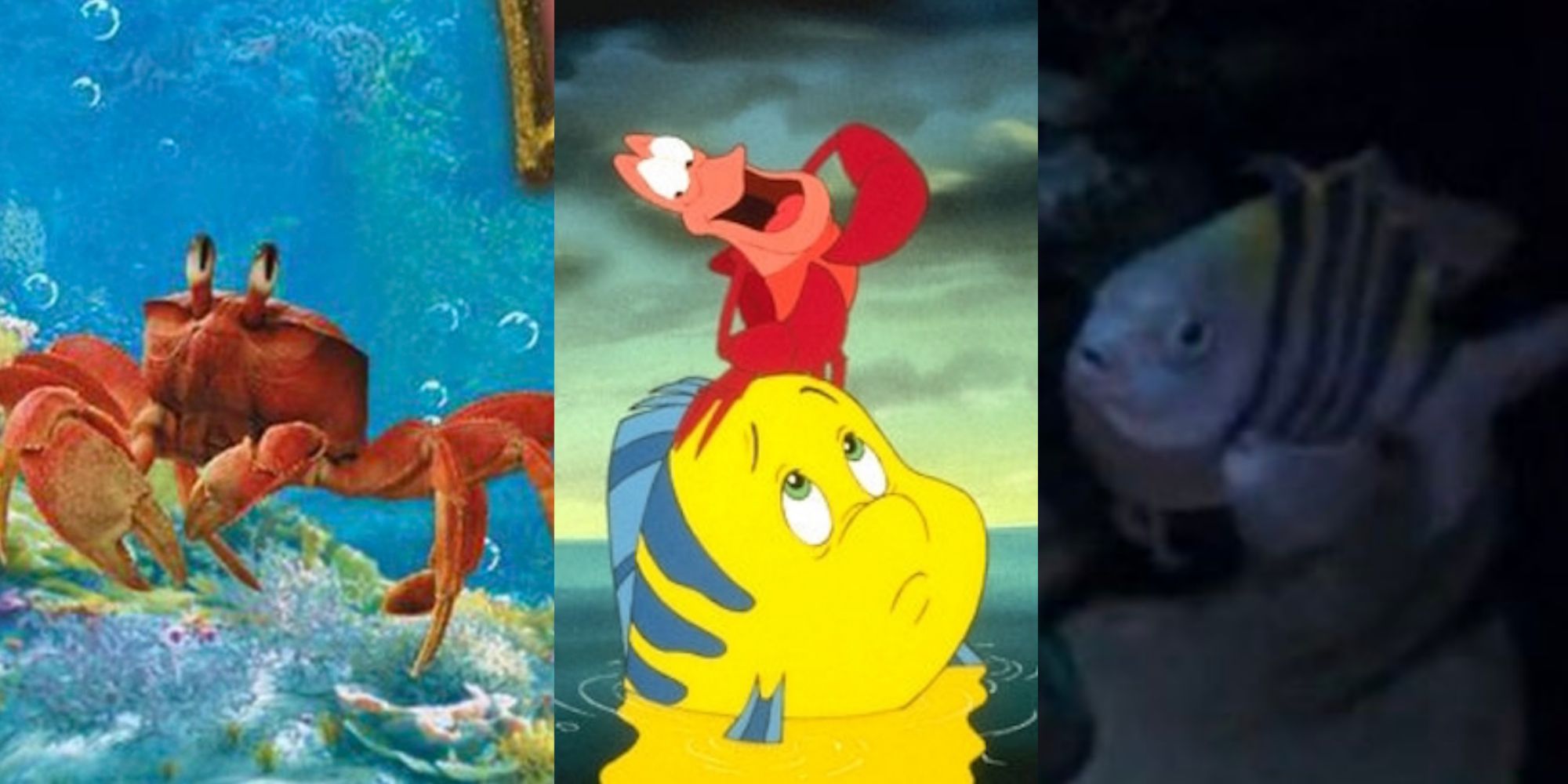The Little Mermaid remake made Sebastian and Flounder look realistic, and the result is a little unsettling. This seems to be the risk of Disney's live-action adaptations, especially when talking animals are involved. Past movies have been criticized for the same thing since there is something offputting about seeing such realistic-looking animals animated to speak. However, the appearance of Ariel's sealife friends proves that Disney wasn't willing to make any changes - but it may be that the studio didn't have much choice.
Every live-action adaptation comes with its challenges, and The Little Mermaid is undoubtedly no exception. Since half the story takes place 'under the sea,' actors like Halle Bailey had to master acting while submerged in water, and it also meant a great deal of work for the special effects team. In the animated version, Ariel was surrounded by adorable cartoon sea friends who were far more expressive than their real-life fish counterparts. However, a more realistic-looking film would need to take a different angle but the result is less than perfect.
Sebastian & Flounder’s Realistic Design Is Unsettling, But It Couldn’t Have Been Better
Talking animals are nothing new in the world of Disney, but when the The Little Mermaid trailer showed a hyper-realistic crab and flatfish talking, it had an almost uncanny valley effect. This led to an onslaught of social media posts criticizing the House of Mouse for ruining Sebastian and Flounder. The cute characters from the 1989 movie are now entirely unrecognizable, and their inability to show emotion makes it difficult to imagine them with a close relationship with Ariel. Of course, the only alternative to this would have been a more 'cartoonish' design, which might have been just as bizarre.
In the 1989 The Little Mermaid, Sebastian, and Flounder hardly looked anything like the animals they were meant to be. Flounder was round rather than flat, while Sebastian looked more like a lobster than a crab (leading many to misunderstand what species he was supposed to be). This worked for the animated film since the characters were more like caricatures of sea life. However, surrounded by human actors, fish with realistic and expressive eyes would have been terrifying. So, neither option was perfect, but as a live-action film, the 'realistic' fish had to be the way to go.
Why Disney Needs To Learn Its Lesson With Live-Action Talking Animals
Disney should have known that the talking animals in The Little Mermaid remake would be an issue with audiences since movies like The Lion King, which also saw hyper-realistic animals with unsettling CGI mouth movements, received similar backlash. Therefore, the studio was already aware of what they were getting into when they took on The Little Mermaid as a live-action remake project. Perhaps they thought they could improve on the problem - and only the film's release will reveal if they were correct. But, if not, it may be time for Disney to stop adapting their talking-animal movies.
Live-action provides a lot of opportunities for Disney's past classics. These stories can be told in a whole new way with more diverse casts and on a grander scale. However, it may just be that not all of the studio's animated films need to be reimagined in live-action, especially if the original art style contributed something unique to the story. It's too late for The Little Mermaid, but Disney should think twice before their next project.



